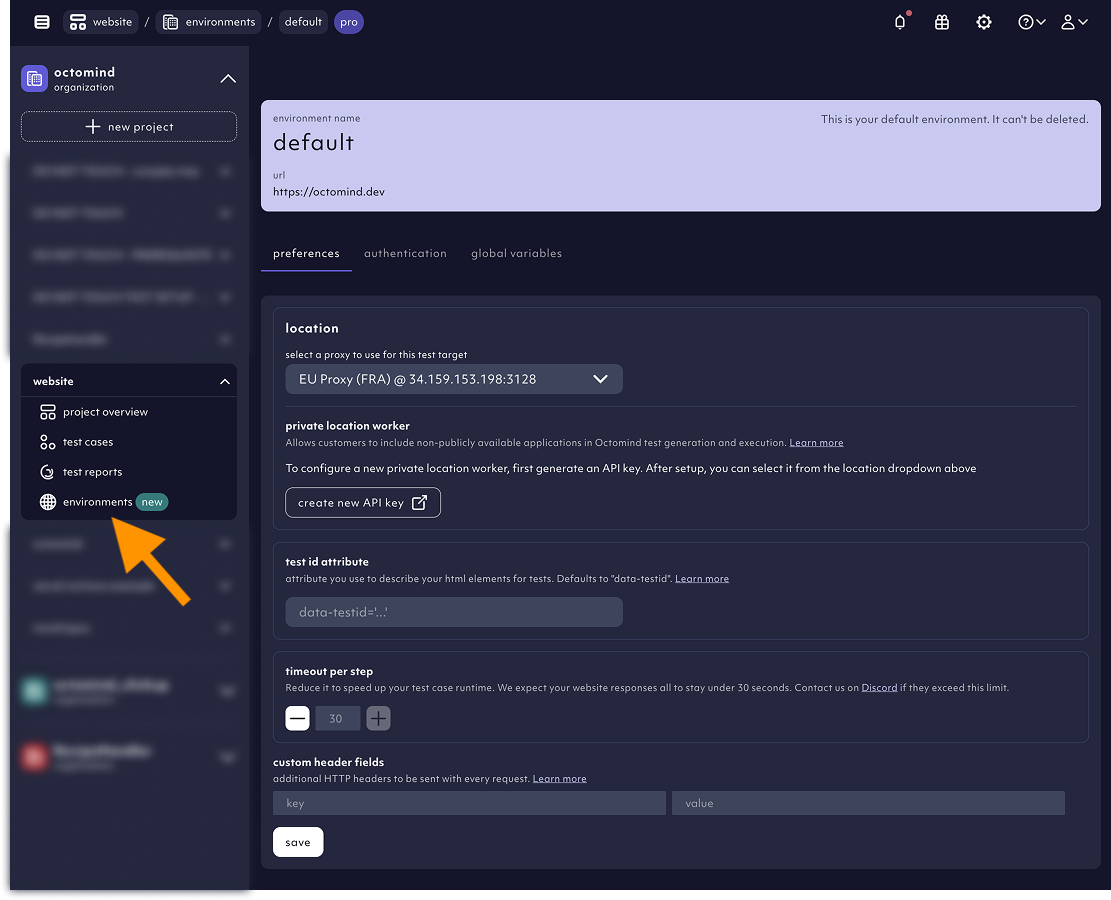Reaching your app
- Allowing Octomind to access your application We need access to your application first to test it. In case you have a stringent bot protection, our Octomind bot will have to get whitelisted - it’s how Octomind navigates and crawls web pages in order to generate end-to-end tests. Here are all the details explaining how Octomind bot works.
- Testing private apps We are able to test applications that are not publicly accessible thanks to our open-sourced private location worker. It’s open-source so you can review its code before setting it up.
- Configure exception to avoid rate limiting We deploy strategies not to trigger rate limiters when creating and running tests like shared auth state, but it’s possible we hit it anyways. The easier solution is to configure an exception to our IP addresses.
Location
You can decide what proxy servers to use for a specific test target and a specific environment. This is how to access from different geographies or a private location.You can set up multiple environments
You can configure testing to match specific deployment settings and validate changes across different stages. You’ll find theenvironments settings in the left project menu.
After creating a project, Octomind provides you with a default environment with the url you provided during setup. You can create multiple environment and set them up separately.

Environment settings in project menu, 03/2025
Variables
Variables are a helpful tool to handle test data and isolate. With Octomind, you can chose from a set of pre-defined variables, create custom ones or dynamic variables. They can be set-up in the left project menu under theenvironments and global variables tab in each environment.
Authentication
If your application requires a user to be logged in to access most of its functionality, you’d need your tests to login. Check out how to set up basic authentication or OTP including email flows. To avoid load at test runtime we employ a shared auth state by sharing cookies between multiple test runs.CI integration
Octomind supports a variety of different CI/CD providers with native integrations and via cURL command. Follow the respective step-by-steps to integrate Octomind tests into your CI pipeline.Advanced setup
We’ve added support for multiple advanced features based on the feedback of our users. Maybe you can use some of the following:- testID attribute to describe your html elements for tests
- cross origin iFrames - to enable accessing cross origin iframes when generating tests.
- custom headers e.g. to avoid captchas
- global step timeout - if your test steps need more time to run
Setting up test runs
Octomind tests are ready-to-run after they’ve been generated and validated. We parallelize automatically to make the runtime faster. We run all active tests in your test suite unless you usetags for test sharding to chop your test execution into smaller chunks.